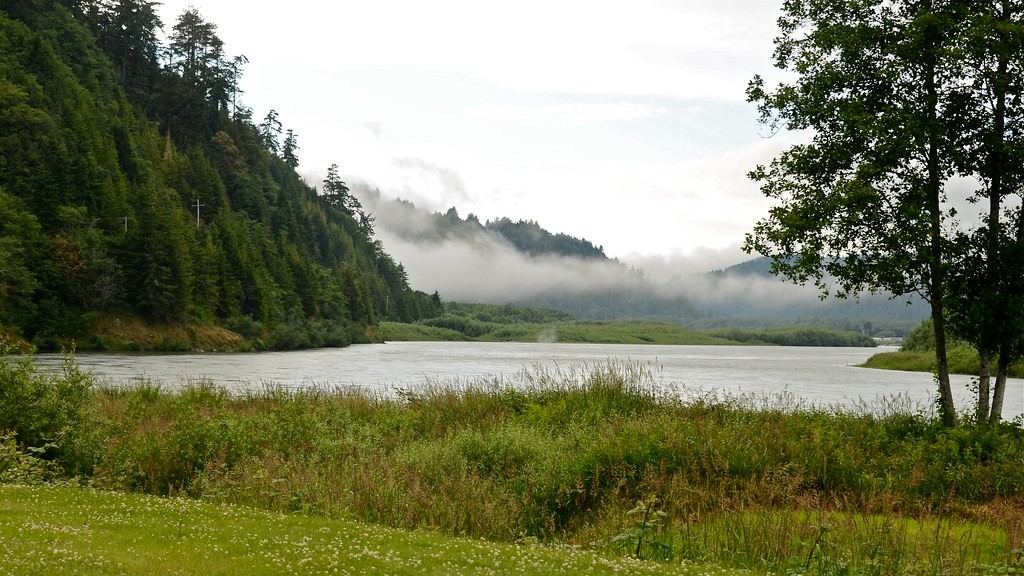Sources
For this article, information was sourced from a variety of sources, including The Encyclopedia Britannica, The National Park Service and The United States Geological Survey, among others.
Introduction
The Mississippi River is one of the largest rivers in North America, with an estimated length of 2,340 miles. This river originates in Lake Itasca, Minnesota, and flows toward the Gulf of Mexico. Along its entire length, the river is accompanied by four significant tributaries, including the Missouri River, the Ohio River, the Arkansas River, and the Red River of the South.
The Missouri River
The Missouri River is the longest of the Mississippi River’s tributaries, with a length of 2,341 miles. This river originates in the Rocky Mountains of Montana and continues south before merging with the Mississippi in the state of Missouri. It passes through several states, including Wyoming, Nebraska, Iowa and Kansas, on its way to the Mississippi. In addition, its basin covers portions of 10 different states. Historically, the Missouri River provided a crucial transportation route for settlers from the east.
The Ohio River
The Ohio River, a tributary of the Mississippi, flows for 981 miles from its source in Pittsburg, Pennsylvania. It then travels through several states – including West Virginia, Ohio, Kentucky, and Illinois – before reaching its confluence with the Mississippi in the state of Kentucky. The Ohio River has been a vital part of travel and commerce since the 1700s, offering a number of advantages over land-based transportation.
The Arkansas River
The Arkansas River is the second longest tributary of the Mississippi. It begins in the Rocky Mountains of Colorado, then passes through Kansas and Oklahoma before merging with the Mississippi in its namesake state of Arkansas. It is approximately 1,469 miles long and serves as a major commercial artery. As of today, numerous dams have been constructed on the Arkansas River for irrigation purposes and to generate hydroelectric power.
The Red River of the South
The Red River of the South is the shortest of the Mississippi River’s four main tributaries, at only 1,290 miles in length. This river originates in Texas, traveling through Oklahoma before joining the Mississippi in northern Louisiana. Like the Arkansas River, the Red River is essential to the area’s economy and culture, providing water to countless farms and industries.
Geological Impacts
All four of the Mississippi’s main tributaries have had significant impacts on the region’s geological landscape over the years. The Missouri River, for example, has left its mark on the Great Plains, carving out deep valleys and creating a number of lakes and wetlands. The Ohio River has also played a key role in shaping the area, notably leaving behind sections of flat lower lands and eroding away the upper regions of certain hills and mountains.
Economic Impacts
Since the early days of European settlement, the Mississippi River’s tributaries have been instrumental in the development of the region’s economy. The Missouri River, in particular, has been an important resource for trade and transportation. In the 19th century, it served as a key waterway linking the Midwest to the Pacific coast. Today, the Ohio River is a crucial element of the regional economy, with industries ranging from steel production to chemical manufacturing.
Environmental Impacts
The Mississippi River and its tributaries have long provided invaluable ecological benefits for the region. The Missouri River, for instance, is home to an abundance of freshwater fish species and serves as a critical habitat for numerous migrating birds. The Red River of the South, meanwhile, is an important spawning ground for the paddlefish and a refuge for threatened fish species.
Regional Benefits
In addition to their economic and environmental impact, the Mississippi River’s four main tributaries also provide a variety of regional benefits. For example, the Missouri River is a crucial source of drinking water for both humans and animals, while the Ohio and Red rivers are popular recreational areas for fishing, boating and swimming.
Cultural Influence
The Mississippi River and its tributaries have had a profound influence on the region’s culture. The Native Americans who lived in the region thousands of years ago relied on the river for transportation and sustenance, and the river has remained an important part of their histories and beliefs. The Missouri River, for instance, is the namesake of the Missouri tribe, while the Red River is known as the “Cradle of the Nations” for its role in the development of the region.
Sustenance
The Mississippi River and its four main tributaries have long served as a vital source of sustenance for both humans and animals. Before the river was submerged by dams, the Missouri River provided an abundant supply of aquatic life, while the Arkansas River offered an essential source of drinking water for settlers. Today, the region’s four major rivers support a variety of migratory species and remain a crucial resource for the area’s fishing industry.
The Mississippi River and its tributaries form a complex navigational system that has served as an essential transportation route for centuries. Many of the region’s major port cities, including New Orleans and Natchez, are located on or near the Mississippi or one of its tributaries. The Missouri River is also a major transportation route, and provides access to numerous shipyards and other marine facilities.
Flood Control
In order to prevent the Mississippi River and its tributaries from damaging the region’s infrastructure, a number of flood control systems have been put in place. The United States Army Corps of Engineers, for example, has constructed a system of levees and dams to minimize the impact of flooding. In addition, wildlife conservation efforts have been implemented to protect the region’s habitats and natural resources.
Pollution Control
In recent decades, numerous pollution control measures have been enacted to protect the region’s rivers. The Environmental Protection Agency, for instance, has established a number of regulations to reduce the emission of pollutants into the rivers. In addition, various state and local governments have implemented their own efforts to reduce water pollution.



